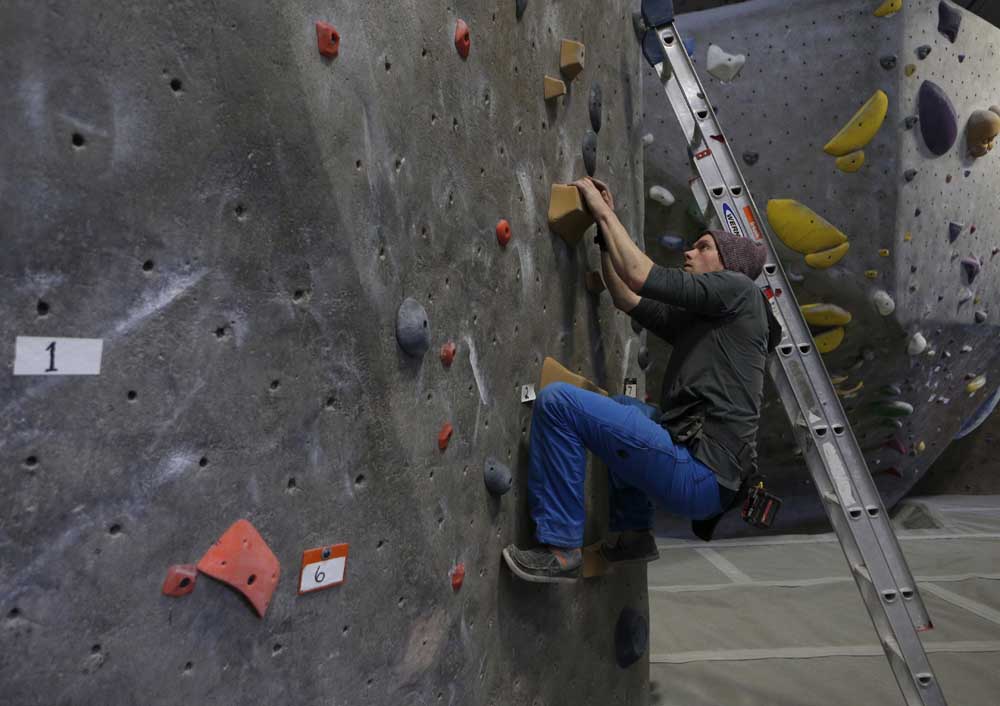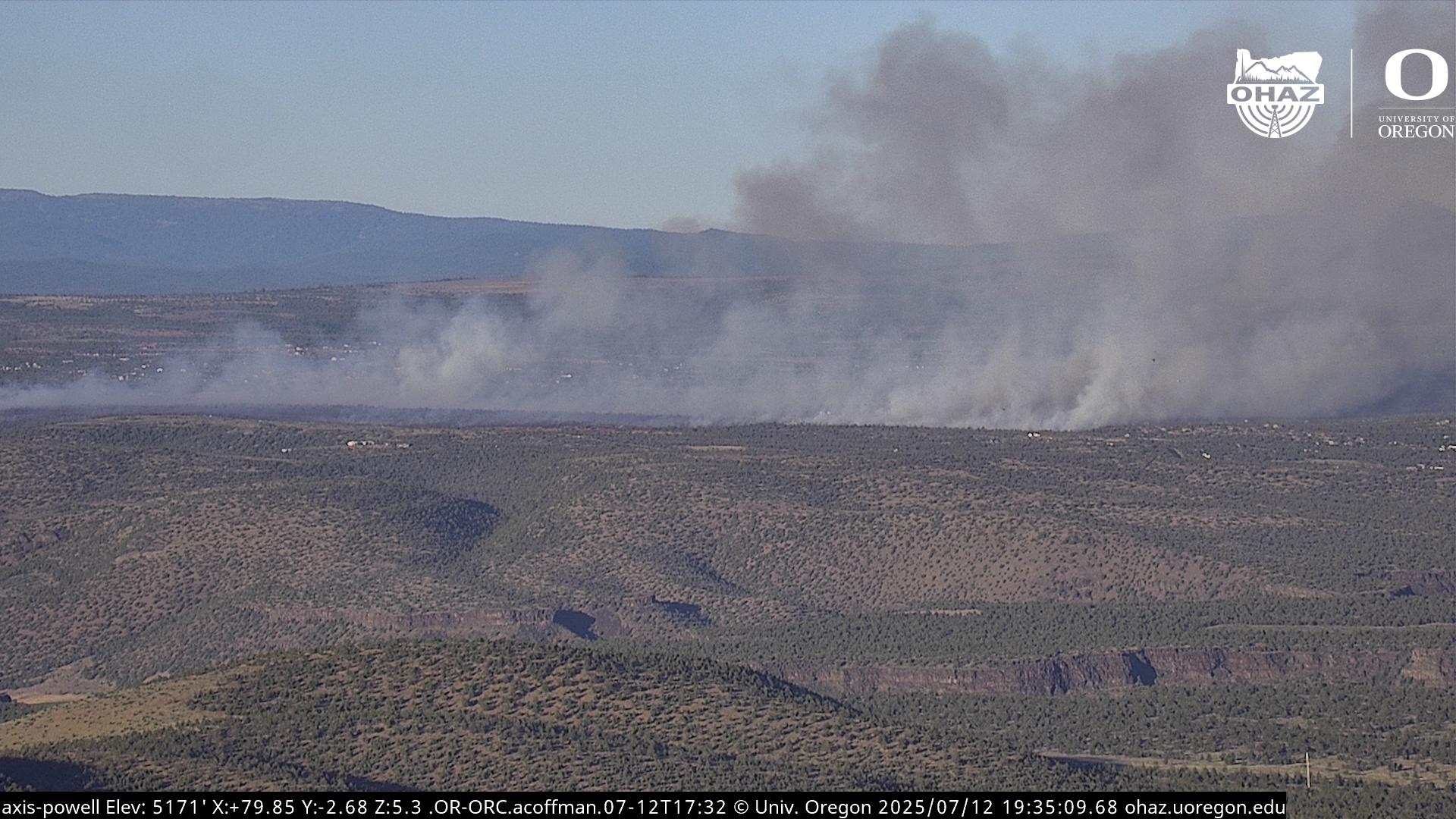Route setters at Bend Rock Gym design your fun
Published 12:00 am Monday, March 19, 2018

- Eric Williamson tests a move while setting a boulder problem at Bend Rock Gym on Monday, March 12, 2018. (Joe Kline/Bulletin photo)
When Joey Jannsen put up his first climbing route, he did not have much instruction to go by.
“I didn’t know how to rig anything. I didn’t know how to get my holds up to me,” Jannsen, now 32 and the head setter at Bend Rock Gym, said. “No impact drivers, no drills. It was all by hand, hand wrenches. I didn’t know what I was doing, really. There was no formal instruction. The manager of the gym he just kind of was like, here are some holds, put them on there. It was literally the most basic description of route setting. ‘Put holds on the wall for people to grab and climb.’ So that was it.”
Trending
Jannsen has now been setting routes for more than a decade, and while many larger gyms have since introduced apprenticeship programs for new setters, Jannsen said he mostly learned through trial and error.
“It’s really difficult to know if you’ve screwed up and made an error,” Jannsen said. “It’s really hard to set a route that is 100 percent fair for a 10-year-old that’s 4-foot-whatever, and a full-grown adult that’s 6-foot-something. Sometimes you can’t be fair for everybody. And that’s why it’s such a gray area.”
Jannsen said that setters also try to make sure a route is fun, that the holds are comfortable and that the movements necessary to reach the top flow naturally. Setters also take into account the function of a route: If they are designing for a competition, they want to separate the good climbers from the great, so there should be points along the route where some competitors will fall or get stuck. But that is not how you would design a route for a kids’ party.
“My goal for a birthday party route is to set some of the easiest movement possible with the easiest holds and get a bunch of the kids to the top feeling good,” Jannsen said. “There’s not thoughts about, where’s the crux going to be? Are we going to have so many kids fall at this point and kids fall at this point? I save that for competitions, when it really matters.”
Jannsen and three other full-time setters at Bend Rock Gym redesign a sport climbing and bouldering section of the gym each week, with most routes staying up for five weeks before being replaced. They also create routes for BRG competitions such as the Bend Boulder Bash and Bend Summer Comp. A week before the Bouldering Open National Championship, held in Salt Lake City earlier this month, Jannsen was called in to replace an injured setter.
Some route setters will place holds based on the moves they want to see the climbers make. Jannsen said he tends to be more free-form in how he designs routes, but he makes sure that different routes require different moves and favor different styles of climbers.
Trending
“Often I don’t know what moves I’m going to be setting, specifically, until I’m putting holds on the wall,” Jannsen said. “I have the holds on the ground, I’ve selected holds that I kind of want, that I think might work. And then I just sort of play with it, taking little bits from other routes that I’ve set. And I’m sometimes trying new things, testing things out. It’s very free-formed. It’s not as planned as some people might think.”
As even-handed as route setters try to be, Jannsen said many climbers can tell who set a route.
“A lot of people have said that I set (routes) geared toward the average female, as opposed to the average male, just based on flexibility,” said Bennett Kornbrath, a 24-year-old setter at BRG. “Really specific movement or body position. Complex sequence or flexibility.”
“Sometimes I’ll get on one of his routes and be like, wow, Bennett’s the only one that can do this, because he can put his foot next to his head and twist into a pretzel,” Jannsen joked.
Kornbrath said their job can be difficult because climbing, as a sport, is intentionally difficult.
“The sport of climbing is finding the hardest way to the top of a rock that you can usually walk to the top of, and we’re mimicking that in a controlled environment inside,” Kornbrath said.
Jannsen said he does not focus too much on making the walls at Bend Rock Gym look like the great outdoors — there are holds on the market that are designed to look like real rock, but BRG has embraced bright, neon-colored equipment. But recreating the challenge of climbing in an indoor setting is still an odd mix of creative design and carpentry.
“I don’t like saying it too much, but it is part art,” Jannsen said. “We want to make things look good and captivating. But it’s part design. We’re designing it specifically for these types of people who want these experiences all across the board. And we’re part construction workers, because it’s physical and we’re using tools and getting creative. It’s a mess, actually.”
With numerous new sport climbing routes and boulder problems needed each week, Jannsen said setters do sometimes run out of new ideas.
“I definitely have spent my fair share of time staring at a wall, shaking my head, asking, what am I going to put on this wall?” Jannsen admitted. “Sometimes I get to the point where I’m like, there are no new ideas anymore. But every single week, all four of us are putting up five to eight boulder problems and a bunch of routes, and somehow they are still interesting to people to climb on.”
Jannsen said that while route setters may be worried that their routes are too repetitive, forcing climbers to do the same moves again and again, even small differences such as the size or shape of the handhold can make similar routes feel very different for those climbing them.
“I have to remind myself of that when I’m setting. I’m not inventing new moves frequently — I don’t think I ever have,” Jannsen said. “I can put some of the same stuff on the wall over and over again, and people will still like it. It will be new to them. I guess I’ll just start with a starting hold, and you just go for it.”
—Reporter: 541-383-0305, vjacobsen@bendbulletin.com








